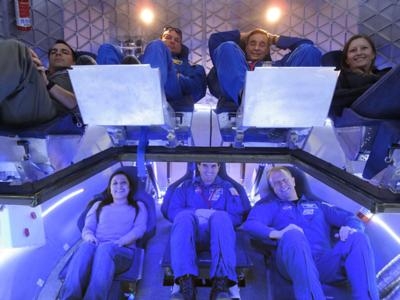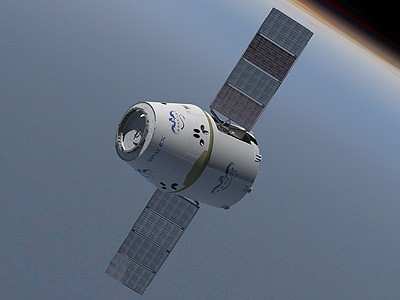Wed, May 09, 2012
Layout Will Allow Astronauts To Move Effectively Within The Vehicle
SpaceX has finished an important evaluation of a prototype Dragon spacecraft designed to carry people into orbit. This key milestone is part of SpaceX's partnership with NASA under a funded Space Act Agreement to advance the design of crew transportation vehicles. The primary goal of the tests was to determine whether the layout will allow astronauts to maneuver effectively in the vehicle. Several veteran space shuttle astronauts and NASA engineers conducted the evaluation during a pair of two-day-long reviews.

"I am very pleased with the progress SpaceX and our other commercial partners are making during the CCDev2 effort," said NASA Commercial Spaceflight Director Philip McAlister. "Together with NASA's development of beyond low-Earth orbit systems, commercial crew and cargo transportation is an integral part of our overall human spaceflight program."
As part of the Commercial Crew Development Round 2, or CCDev2, agreement, the company invited the astronauts and engineers to its headquarters in Hawthorne, Calif., to conduct the evaluation. The prototype was equipped with seats, lighting, environmental control and life support systems, conceptual displays and controls, cargo racks and other interior systems. "This milestone demonstrated the layout of the crew cabin supports critical tasks," said SpaceX Commercial Crew Development Manager Garrett Reisman. "It also demonstrated the Dragon interior has been designed to maximize the ability of the seven-member crew to do their job as effectively as possible."

During the reviews, space shuttle veterans Rex Walheim, Tony Antonelli, Eric Boe and Tim Kopra participated in so-called "human factor assessments." This included entering and exiting Dragon under normal and emergency scenarios. They also performed reach and visibility evaluations. "As an anchor customer for commercial transportation services, we are happy to provide SpaceX with knowledge and lessons learned from our 50 years of human spaceflight," said Commercial Crew Program Manager Ed Mango. "We appreciate the opportunity SpaceX gave us to provide feedback on these critical interior systems while the company maintains its flexibility to appeal to other customers."
This is the seventh of 10 milestones SpaceX must meet under the CCDev2 agreement, which continues through July 31. This includes the development of a launch abort system for crew escape during launch or ascent. All of NASA's industry partners continue to meet their established milestones in developing safe, reliable and affordable commercial crew transportation capabilities. (Images courtesy SpaceX)
More News
Aero Linx: International Federation of Airworthiness (IFA) We aim to be the most internationally respected independent authority on the subject of Airworthiness. IFA uniquely combi>[...]
Ultrahigh Frequency (UHF) The frequency band between 300 and 3,000 MHz. The bank of radio frequencies used for military air/ground voice communications. In some instances this may >[...]
A Few Questions AND Answers To Help You Get MORE Out of ANN! 1) I forgot my password. How do I find it? 1) Easy... click here and give us your e-mail address--we'll send it to you >[...]
From 2019 (YouTube Edition): Learning To Paint Without Getting Any On Your Hands PPG's Aerospace Coatings Academy is a tool designed to teach everything one needs to know about all>[...]
Also: Sustainable Aircraft Test Put Aside, More Falcon 9 Ops, Wyoming ANG Rescue, Oreo Cookie Into Orbit Joby Aviation has reason to celebrate, recently completing its first full t>[...]
 ANN's Daily Aero-Linx (05.06.25)
ANN's Daily Aero-Linx (05.06.25) ANN's Daily Aero-Term (05.06.25): Ultrahigh Frequency (UHF)
ANN's Daily Aero-Term (05.06.25): Ultrahigh Frequency (UHF) ANN FAQ: Q&A 101
ANN FAQ: Q&A 101 Classic Aero-TV: Virtual Reality Painting--PPG Leverages Technology for Training
Classic Aero-TV: Virtual Reality Painting--PPG Leverages Technology for Training Airborne 05.02.25: Joby Crewed Milestone, Diamond Club, Canadian Pilot Insurance
Airborne 05.02.25: Joby Crewed Milestone, Diamond Club, Canadian Pilot Insurance




